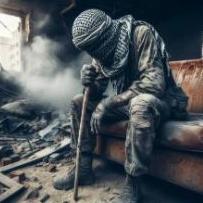Leaderboard
The search index is currently processing. Leaderboard results may not be complete.
Popular Content
Showing content with the highest reputation on 03/08/2024 in all areas
-
This post cannot be displayed because it is in a password protected forum. Enter Password
-
4 points
-
This post cannot be displayed because it is in a password protected forum. Enter Password
-
This post cannot be displayed because it is in a password protected forum. Enter Password
-
This post cannot be displayed because it is in a password protected forum. Enter Password
-
This post cannot be displayed because it is in a password protected forum. Enter Password
-
This post cannot be displayed because it is in a password protected forum. Enter Password
-
This post cannot be displayed because it is in a password protected forum. Enter Password
-
2 points
-
Request marked as pending until a further desicion keep the work up!2 points
-
2 points
-
2 points
-
This post cannot be displayed because it is in a password protected forum. Enter Password
-
This post cannot be displayed because it is in a password protected forum. Enter Password
-
This post cannot be displayed because it is in a password protected forum. Enter Password
-
1 point
-
1 point
-
1 point
-
1 point
-
1 point
-
Toriyama was the mind behind the martial arts fantasy franchise starring Son Goku, a boy from outer space with superhuman strength and a monkey's tail who embarks on a quest for the seven dragon balls. The Dragon Ball universe remains one of Japan's biggest global hits, captivating the hearts of many manga-loving teenagers and adults around the world since its debut in the 1980s. Toriyama's death was announced on Friday by the official Dragon Ball website in a statement shared by studio Bird and Capsule Corporation Tokyo. "We deeply regret that he still had several works in the process of creation with great enthusiasm," the statement said. "There would be many things left for him to do. However, he has left many manga titles and works of art to this world," he added, thanking fans for their support on behalf of Toriyama. The artist died of an acute subdural hematoma, a form of brain hemorrhage, according to the statement. Toriyama was born on April 5, 1955 in the city of Kiyosu, Aichi Prefecture, and began drawing manga at the age of 23. He debuted as a cartoonist in 1978 by submitting a short story to the manga fan magazine "Weekly Shonen Jump." His "Dragon Ball" series began appearing in the same magazine in 1984 and was the center of a creative career that spanned more than four decades. The franchise is based on the classic Chinese novel "Journey to the West" and has since been adapted into anime and the 2009 Hollywood action film "Dragon Ball Evolution." As Son Goku sets out on his quest for the seven dragon balls, he fights villains and protects the Earth. As he ages, the story focuses on his descendants and friends. Dragon Balls, when collected, can summon Shen Long, a divine dragon capable of granting any wish. Goku usually spends his wishes on his friends or restoring a badly destroyed Earth in this series focused on courage, friendship and family. Noted Japanese author and game designer Yuji Horii, a long-time friend of Toriyama, said they worked together on the po[CENSORED]r game Dragon Quest. Click1 point
-
1 point
-
1 point
-
1 point
-
Nickname: GL HERO SHIMA Video author: Total Gaming Name of the game: Granny Link video: Rate this video 1-10: 101 point
-
Victor Osimhen is a Nigerian professional footballer who has made a name for himself in the football world. He is known for his exceptional skills on the field and has gained a massive following of fans. With such a successful career, many people are curious about Victor Osimhen's net worth, cars, and salary. Let's take a closer look at the financial aspect of this talented athlete's life. Victor Osimhen was born on December 29, 1998, in Lagos, Nigeria. He began his professional football career at a young age and quickly rose to fame with his impressive performances on the field. Osimhen's dedication and hard work have earned him numerous accolades and awards throughout his career. What is Victor Osimhen's Net Worth? Victor Osimhen has achieved significant success in his football career, leading many to wonder about his net worth. As of [current year], Victor Osimhen's net worth is estimated to be around [insert net worth here]. This impressive net worth is a result of Osimhen's successful football career, lucrative endorsement deals, and various investments. How Did Victor Osimhen Build His Wealth? Victor Osimhen's wealth can be attributed to his successful football career. He has played for several prestigious football clubs, where he has earned substantial salaries and bonuses. In addition to his football earnings, Osimhen has secured lucrative endorsement deals with top brands, further boosting his wealth. Furthermore, Osimhen has made smart investments, ensuring a steady stream of income outside of football. What Cars Does Victor Osimhen Own? With his impressive net worth, Victor Osimhen has indulged in a luxurious lifestyle, including owning several high-end cars. Osimhen is known for his love of luxury vehicles and has been spotted driving [insert car models here]. These extravagant cars are a testament to Osimhen's success and affluence in the football world. Victor Osimhen's Salary Victor Osimhen's football career has been incredibly lucrative, with substantial salaries and bonuses contributing to his impressive wealth. His current salary is estimated to be around [insert salary here], making him one of the highest-earning footballers in the world. Osimhen's exceptional talent and hard work have earned him this substantial income, allowing him to live a lavish lifestyle. Endorsement Deals and Investments Aside from his football earnings, Victor Osimhen has secured numerous endorsement deals with top brands, further boosting his income. These lucrative partnerships have contributed significantly to his overall wealth. Additionally, Osimhen has made smart investments in various ventures, ensuring a steady flow of income outside of his football career. Charitable Contributions Despite his lavish lifestyle, Victor Osimhen is known for his philanthropic efforts and charitable contributions. He has used his wealth and influence to give back to his community and support various causes. Osimhen's generosity and commitment to making a positive impact further solidify his status as a role model both on and off the field. Conclusion In conclusion, Victor Osimhen's net worth, cars, and salary reflect his remarkable success in the football world. With a substantial net worth, lavish cars, and impressive salary, Osimhen has established himself as one of the most prominent figures in the sports industry. His dedication, talent, and business acumen have propelled him to great heights, solidifying his status as a football icon. https://isait.sfo2.digitaloceanspaces.com/victor-osimhen-net-worth-cars-and-salary.html1 point
-
Monkey is a common name that may refer to most mammals of the infraorder Simiiformes, also known as the simians. Traditionally, all animals in the group now known as simians are counted as monkeys except the apes, thus monkeys (in that sense) constitute an incomplete paraphyletic grouping; however, in the broader sense based on cladistics, apes (Hominoidea) are also included, making the terms monkeys and simians synonyms in regard to their scope. In 1812, Étienne Geoffroy grouped the apes and the Cercopithecidae group of monkeys together and established the name Catarrhini, "Old World monkeys", ("singes de l'Ancien Monde" in French).[3][4][5] The extant sister of the Catarrhini in the monkey ("singes") group is the Platyrrhini (New World monkeys).[3] Some nine million years before the divergence between the Cercopithecidae and the apes,[6] the Platyrrhini emerged within "monkeys" by migration to South America from Afro-Arabia (the Old World),[citation needed][7][8] likely by ocean.[9][10][better source needed] Apes are thus deep in the tree of extant and extinct monkeys, and any of the apes is distinctly closer related to the Cercopithecidae than the Platyrrhini are. Many monkey species are tree-dwelling (arboreal), although there are species that live primarily on the ground, such as baboons. Most species are mainly active during the day (diurnal). Monkeys are generally considered to be intelligent, especially the Old World monkeys. Within suborder Haplorhini, the simians are a sister group to the tarsiers – the two members diverged some 70 million years ago.[11] New World monkeys and catarrhine monkeys emerged within the simians roughly 35 million years ago. Old World monkeys and apes emerged within the catarrhine monkeys about 25 million years ago. Extinct basal simians such as Aegyptopithecus or Parapithecus (35–32 million years ago) are also considered monkeys by primatologists.[12][9][13][14][15][16] Lemurs, lorises, and galagos are not monkeys, but strepsirrhine primates (suborder Strepsirrhini). The simians' sister group, the tarsiers, are also haplorhine primates; however, they are also not monkeys.[citation needed] Apes emerged within monkeys as sister of the Cercopithecidae in the Catarrhini, so cladistically they are monkeys as well. However, there has been resistance to directly designate apes (and thus humans) as monkeys, so "Old World monkey" may be taken to mean either the Cercopithecoidea (not including apes) or the Catarrhini (including apes).[17][18][19][20][21][22][23][24][25] That apes are monkeys was already realized by Georges-Louis Leclerc, Comte de Buffon in the 18th century.[26] Linnaeus placed this group in 1758 together with the tarsiers, in a single genus "Simia" (sans Homo), an ensemble now recognised as the Haplorhini.[27] Monkeys, including apes, can be distinguished from other primates by having only two pectoral nipples, a pendulous penis, and a lack of sensory whiskers.[28][better source needed] Historical and modern terminology According to the Online Etymology Dictionary, the word "monkey" may originate in a German version of the Reynard the Fox fable, published c. 1580. In this version of the fable, a character named Moneke is the son of Martin the Ape.[29] In English, no clear distinction was originally made between "ape" and "monkey"; thus the 1911 Encyclopædia Britannica entry for "ape" notes that it is either a synonym for "monkey" or is used to mean a tailless humanlike primate.[30] Colloquially, the terms "monkey" and "ape" are widely used interchangeably.[31] Also, a few monkey species have the word "ape" in their common name, such as the Barbary ape. Later in the first half of the 20th century, the idea developed that there were trends in primate evolution and that the living members of the order could be arranged in a series, leading through "monkeys" and "apes" to humans.[32] Monkeys thus constituted a "grade" on the path to humans and were distinguished from "apes". Scientific classifications are now more often based on monophyletic groups, that is groups consisting of all the descendants of a common ancestor. The New World monkeys and the Old World monkeys are each monophyletic groups, but their combination was not, since it excluded hominoids (apes and humans). Thus, the term "monkey" no longer referred to a recognized scientific taxon. The smallest accepted taxon which contains all the monkeys is the infraorder Simiiformes, or simians. However this also contains the hominoids, so that monkeys are, in terms of currently recognized taxa, non-hominoid simians. Colloquially and pop-culturally, the term is ambiguous and sometimes monkey includes non-human hominoids.[33] In addition, frequent arguments are made for a monophyletic usage of the word "monkey" from the perspective that usage should reflect cladistics.[21][34][35][36][37] A group of monkeys may be commonly referred to as a tribe or a troop.[38] Two separate groups of primates are referred to as "monkeys": New World monkeys (platyrrhines) from South and Central America and Old World monkeys (catarrhines in the superfamily Cercopithecoidea) from Africa and Asia. Apes (hominoids)—consisting of gibbons, orangutans, gorillas, chimpanzees and bonobos, and humans—are also catarrhines but were classically distinguished from monkeys.[39][9][40][41] Tailless monkeys may be called "apes", incorrectly according to modern usage; thus the tailless Barbary macaque is historically called the "Barbary ape". Description As apes have emerged in the monkey group as sister of the old world monkeys, characteristics that describe monkeys are generally shared by apes as well. Williams et al. outlined evolutionary features, including in stem groupings, contrasted against the other primates such as the tarsiers and the lemuriformes.[42] Monkeys range in size from the pygmy marmoset, which can be as small as 117 mm (4+5⁄8 in) with a 172 mm (6+3⁄4 in) tail and just over 100 g (3+1⁄2 oz) in weight,[43] to the male mandrill, almost 1 m (3 ft 3 in) long and weighing up to 36 kg (79 lb).[44] Some are arboreal (living in trees) while others live on the savanna; diets differ among the various species but may contain any of the following: fruit, leaves, seeds, nuts, flowers, eggs and small animals (including insects and spiders).[45] Some characteristics are shared among the groups; most New World monkeys have long tails, with those in the Atelidae family being prehensile, while Old World monkeys have non-prehensile tails or no visible tail at all. Old World monkeys have trichromatic color vision like that of humans, while New World monkeys may be trichromatic, dichromatic, or—as in the owl monkeys and greater galagos—monochromatic. Although both the New and Old World monkeys, like the apes, have forward-facing eyes, the faces of Old World and New World monkeys look very different, though again, each group shares some features such as the types of noses, cheeks and rumps.[45] Classification The following list shows where the various monkey families (bolded) are placed in the classification of living (extant) primates. Order Primates Suborder Strepsirrhini: lemurs, lorises, and galagos Suborder Haplorhini: tarsiers, monkeys, and apesInfraorder Tarsiiformes Family Tarsiidae: tarsiers Infraorder Simiiformes: simiansParvorder Platyrrhini: New World monkeys Family Callitrichidae: marmosets and tamarins (42 species) Family Cebidae: capuchins and squirrel monkeys (14 species) Family Aotidae: night monkeys (11 species) Family Pitheciidae: titis, sakis, and uakaris (41 species) Family Atelidae: howler, spider, and woolly monkeys (24 species) Parvorder CatarrhiniSuperfamily Cercopithecoidea Family Cercopithecidae: Old World monkeys (135 species) Superfamily Hominoidea: apes Family Hylobatidae: gibbons ("lesser apes") (20 species) Family Hominidae: great apes (including humans, gorillas, chimpanzees, and orangutans) (8 species) Cladogram with extinct families Below is a cladogram with some extinct monkey families.[46][47][48] Generally, extinct non-hominoid simians, including early catarrhines are discussed as monkeys as well as simians or anthropoids,[39][9][40] which cladistically means that Hominoidea are monkeys as well, restoring monkeys as a single grouping. It is indicated approximately how many million years ago (Mya) the clades diverged into newer clades.[49][50][51][52] It is thought the New World monkeys started as a drifted "Old World monkey" group from the Old World (probably Africa) to the New World (South America).[9] https://en.wikipedia.org/wiki/Monkey1 point
-
Mohamed Mohamed Mohamed Aboutrika (Arabic: محمد محمد محمد أبو تريكة (repeated three times); born 7 November 1978) is an Egyptian retired professional footballer who played as an attacking midfielder and a forward. He won the African Footballer of the Year award in 2008 beating the previous years winner Emmanuel Adebayor, and was one of five nominees for the 2006 award, and one of the ten nominated for the 2013 award. Aboutrika won the African Cup of Nations in 2006 with the Egyptian national team. He also scored the winning goal to help Egypt win the 2008 Africa Cup of Nations. He helped his club Al Ahly to win the bronze medal in the FIFA Club World Cup in 2006.[2] Off the pitch, he has been noted for both various humanitarian efforts as well as his philanthropy in Egypt.[3] Club career[edit] 2004: Debut season with Al Ahly[edit] In the first half of Egyptian league 2003–2004, Aboutrika scored 3 goals for Tersana. In January 2004, he was offered a position in Egypt's and Africa's top football team, Al Ahly. He scored 11 goals in his first 13 appearances with Al Ahly in 2003–2004 season (all in the league), coming in the second place between top scorers in the Egyptian League with 14 goals. Aboutrika's efforts with Ahly led to attention from the Egyptian national team, and he started the game against Trinidad and Tobago in a friendly match before the World Cup 2006 qualifiers on 31 March 2004 in Arab Contractors Stadium. The first starting game for Aboutrika ended 2–1 for the Egyptians. He started as an attacker, but was found to play better when he played his normal position behind the attackers in the attacking midfield position. Aboutrika scored his first national goal in this game. He scored 5 goals in his first 6 appearances with Egypt between 2004 and 2005. 2005 season[edit] In 2005, Al Ahly regained the Egyptian League Championship after four years out of the top position, Aboutrika finished 3rd in the goalscoring rankings in the Egyptian League, while also helping his teammate Emad Moteab finish as the competition's top scorer. Also in 2005, Aboutrika played a great role in Al Ahly victory of the 2005 CAF Champions League, he scored an amazing goal in the final with an outrageous effort from 30 yards out against Étoile Sportive du Sahel of Tunisia in a game that ended 3–0 for Al Ahly. Al Ahly qualified for the 2005 FIFA Club World Championship but finished last, Aboutrika told FIFA.com the reason, saying: "Our problem was that we lost our form, for some reason we could not play like we had before arriving in Japan". 2006[edit] He proved to be his international team's trump card en route to victory in the 2006 Africa Cup of Nations in February, when he scored two important goals against Libya and Ivory Coast. He was the winning goal assistant, in the semi-final match against Senegal when Amr Zaki scored in the 80th minute. He was very dominant in that game, but his accurate shot hit the bar. In the final match, Aboutrika scored the decisive penalty in the shoot-out which gave Egypt the title. Aboutrika led Al Ahly to the 2006 CAF Champions League title for the second successive time in November 2006. He was the top scorer of the competition with 8 goals, and scored the winning goal in the final against CS Sfaxien in the 91st minute. He also participated with Al Ahly in winning the CAF Super Cup against FAR Rabat of Morocco, days after the Africa Cup of Nations in February. Locally, he got the Egyptian Premier League in June when he was the top scorer by 18 goals, and won Egypt Cup, then the Egyptian Super Cup in July when he scored the winning goal against ENPPI in the 92nd minute despite having suffered an injury in the first half. Japanese newspapers nominated Aboutrika to be one of the best players in 2006 FIFA Club World Cup in Japan, the last tournament in Aboutrika's great year. Al Ahly was one of the African representatives, and the first team ever to be qualified two successive times to this championship, and the first African team to win a medal in that competition. In the opening match of the tournament against Auckland City FC of New Zealand on 10 Dec 2006, Aboutrika helped Al Ahly to secure and book a semi-final date with Internacional of Brazil. Al Ahly won 2–0 easily, and Aboutrika capped a fine display by stroking a superbly flighted free-kick over the wall, scoring the second goal for his team. As well as netting with his delightful right-foot effort, Aboutrika was at the heart of most his side's best moves, dictating the rhythm with his skill and vision. In the semi-finals, Al Ahly faced Brazilian Internacional on 13 December 2006, and Aboutrika played a good game, but his accurate shot hit the Brazilian right-hand post to deprive his team from a deserved draw. Al Ahly lost the match 2–1, but proved a good efficiency, yet the ball refused to be netted in many available chances to score in Brazilian goalkeeper.[4] Al Ahly faced Club América of Mexico, for the third place, and Aboutrika gave Al Ahly the lead with an amazing free-kick over the wall, ending the first half 1–0 for Al Ahly. In the second half, America scored an equalizer, but just as usual, Aboutrika appeared in the 79th minute with a skilled ball, he showed yet again why he is on the shortlist for the African player of the year. After surging out of midfield and finding Flavio Amado with a pinpoint pass, the mercurial playmaker latched on to the Angolan's return ball and calmly slotted the ball past the Mexican goalkeeper for his third goal of the tournament. Al Ahly won the third place, after Aboutrika lifted his team to an unprecedented result for the Egyptian club or any African outfit. He finished as the tournament's top scorer with 3 goals in 3 matches. Aboutrika won all but one of the competitions he participated in that year for club and country, and got the bronze medal for Al Ahly in 2006 FIFA Club World Cup. He was the top scorer in three competitions, which are 2006 FIFA Club World Cup with 3 goals, Egyptian Premier League with 18 goals and 2006 CAF Champions League with 8 goals. Aboutrika scored in other competitions, and made brilliant assistants to strikers. African Footballer of the Year 2006 Nomination[edit] To the FIFA.com expression,[5] was nominated to win the 2006 CAF African Footballer of the Year award along with Chelsea striker Didier Drogba and FC Barcelona forward Samuel Eto'o. The other nominees for the honour were Chelsea and Ghana international midfielder Michael Essien, and Nigeria and Portsmouth striker Nwankwo Kanu, who previously won the award twice. Aboutrika said in November 2006: "I would love to be nominated for the CAF Best Player award. That would make 2006 a very special year!".[6] Aboutrika was the only African-based player between the nominees, but he was also the only one who made an achievement for his national team that year by winning 2006 Africa Cup of Nations. Aboutrika's brace in the 2006 FIFA Club World Cup and his dazzling performances throughout the season made him a serious contender for the CAF African Footballer of the Year award (as well as the BBC award) and secured his place as Egypt's most po[CENSORED]r personality. He did not win the award but achieved second place and later was given "best interclub player" and "best player in the CAF Champions League." "Aboutrika has won the highest prize any person can achieve, that is the love of the people," sports columnist Hassan Mistikawi wrote in the state-owned Al-Ahram daily newspaper. Former Al Ahly coach Manuel José de Jesus described Aboutrika as "the best football player in Africa", commenting that Aboutrika did not show more of his repertoire of skills while at the Club World Cup. He said: "Aboutrika didn't introduce all what he has in FIFA Club World Cup 2006, but he got the top scorer title and helped leading his team to the third place". José also mentioned Aboutrika as one of the best players he ever trained. He reinforced this statement, saying: "Aboutrika is priceless for us. I can't imagine my team without him". 2007[edit] In 2007, Al Ahly won the Egyptian Premier League (2006–2007) for the third successive season. Aboutrika scored 7 goals for his team, although he was injured. Al Ahly won the Egypt Cup 2007 for the second successive time. Aboutrika was the top goalscorer of the competition with 4 goals. He scored a double kick memorable goal against Tala'ea El-Gaish SC in the 8-round game which ended 3–1 for Al Ahly. In the final, Al Ahly faced his rival Zamalek SC. Aboutrika made a one neck-saving equalizer in the last 2 minutes on 2 July 2007 in the Egypt Cup resulting in extra-time after tying 2–2. After Zamalek grabbed their third in the first half of extra-time, Aboutrika dazzled the stands with two great balls, one an assisted cross over the whites' defense to Osama Hosny to score the equalizer in the second half of extra-time in the first seconds of the game and within a minute, he surged between the Zamalek's midfield and passed two Zamalek players before providing an accurate through pass to Ahmad Sedik on the wing who went through on goal and assisted again for Osama Hosny for the late winner and holding high the Egyptian Cup. After that, Al Ahly won the Egyptian Super Cup 2007 for the third successive time, through shoot-outs, after tying 1–1 with Ismaily. In 2007 CAF Champions League, Aboutrika scored 4 goals for Al Ahly until now, to raise his African goals to the number 15. Al Ahly faced Étoile Sportive du Sahel of Tunisia in the final match. Al Ahly was having the chance to be the first team in the World to reach FIFA Club World Cup three successive times, and the first team in Africa to win CAF Champions League three successive times. However, the two legs ended, seeing Étoile Sportive du Sahel of Tunisia lifting the cup. He won the title Best Player in Egypt for 2007 the fourth successive time after 2004, 2005, 2006 and 2007 setting a new Egyptian record. 2008[edit] African Cup of Nations 2008 In 2008, Aboutrika scored 4 goals for Egypt in the 2008 Africa Cup of Nations. He scored the winning goal against Cameroon in the final match, helping Egypt to win the African Cup of Nations for the second consecutive tournament. Aboutrika also scored a goal in the semi-final against the Ivory Coast, and scored twice against Sudan in Egypt's group stage match. Aboutrika scored a goal in the final match. In the previous tournament in 2006, he scored the latest decisive penalty shoot-out in the final match against the Ivory Coast to give Egypt the cup. With his team Al Ahly of Egypt, Aboutrika was the hero of final matches again, through scoring a goal in the final match of both the 2006 and the 2005 CAF Champions League helping his team lift the continental cup. CAF Champions League 2008[edit] Aboutrika rehealed from injury in August, after missing the group stage start of 2008 CAF Champions League with his team Al Ahly. He marked his first participation in the group stage, scoring the winning goal for Al Ahly in the 93rd minute against Dynamos F.C. of Zimbabwe in an 8-round game that ended 2–1 for the Egyptian side. On 30 August, he helped Al Ahly to grab the 3 points from Zimbabwe, after making the winning goal, scored by his favourite teammate Mohamed Barakat; Al Ahly achieved a 1–0 win. On 14 September, Aboutrika scored the second goal for Al Ahly against their rivals, Zamalek SC of Egypt, in a group game that ended 2–2.[7] Aboutrika scored again in the final group match against ASEC Mimosas, a game ended 2–2 as Aboutrika netted the first goal for Al Ahly. A draw sealed first place in Group A for Al Ahly with 12 points from six matches, while Dynamos of Zimbabwe joined them in the semi-finals of the 3.5-million-dollar competition.[8] Aboutrika was crowned the 2008 BBC African Footballer of the Year. He won after taking more than half of the total ballot.[9] 2008 African Footballer of the Year nomination[edit] Mohamed Aboutrika (Al Ahly, Egypt), Emmanuel Adebayor (Arsenal, Togo), Amr Zaki (Wigan Athletic, Egypt), Didier Drogba (Chelsea F.C., Ivory Coast) and Michael Essien (Chelsea F.C., Ghana) make up the shortlist for the Glo-CAF African Footballer of the Year across the world.[10] The Confederation of African Football (CAF) on Wednesday in Lagos, Nigeria, announced the final shortlist of categories for the Glo-CAF Awards 2008. The final three for the title was decided following votes from the head coaches of the 53 national associations affiliated to CAF. For the topmost honour, Glo-CAF Player of the Year across the world, the contenders are Emmanuel Adebayor (Arsenal and Togo), Michael Essien (Chelsea and Ghana) and Mohamed Aboutrika (Al Ahly and Egypt). The shortlist for the Glo-CAF Best Player on the Continent are Mohamed Aboutrika (Al Ahly, Egypt), Ahmed Hassan (Al Ahly, Egypt), Flavio Amado (Al Ahly, Angola). The winner of the two categories will be announced at the awards gala on 10 February, in Lagos, Nigeria.[11] FIFA World Cup 2010 Qualifiers On 7 June, Aboutrika scored in Egypt's world cup qualifier against Algeria in Algeria, but Egypt lost 3–1. On 4 July, Aboutrika played in Egypt's world cup qualifier against Rwanda in Egypt, helping the Egyptians win 3–0, and scored the first and the third goal, making the Egyptian team second after Algeria, in their group. Aboutrika reached his fifth goal in FIFA World Cup 2010 Qualifiers. 2012[edit] Port Said Stadium disaster After the Port Said Stadium disaster, on 1 February 2012, Aboutrika decided to retire from professional football, along with Emad Motaeb and Mohamed Barakat, then he decided to get back to football.[12][13] Around a week later, the Egyptian Premier League had been cancelled. Aboutrika had finished the uncompleted campaign with 4 goals in 14 games. CAF Champions League Aboutrika helped Al Ahly won their seventh CAF Champions League title after scoring 6 goals. His most impressive match was on 14 May 2012. Ahly were down 1–0 at home to Stade Malien in a second leg CAF Champions League match and were down 2–0 on aggregate. Aboutrika was subbed on in the 42nd minute for Mohamed Shawky and in the second half, he scored his first ever CAF Champions League hat-trick, 2 of which were scored in the last 8 minutes of the match. He scored the first from a wonderfully curled free-kick from 28 yards out. He then scored the second from the penalty spot in the 82nd minute. Finally, he blasted the third from into the top right corner from 12 yards out to get the hat-trick, complete the comeback, and secure Al Ahly a place in the 2012 CAF Champions League group stage. On 22 July 2012, he scored against Zamalek to win 1–0 in the group stage match. London 2012 Aboutrika was one of the three overage players participated with Egypt in London 2012, and was the team's captain. Aboutrika scored Egypt's first goal in the tournament against Brazil in a 3–2 loss.[14] In the second game, Aboutrika's assist for Mohamed Salah picked a 1–1 draw against New Zealand.[15] In the third game against Belarus, Aboutrika assisted a goal for Mohamed Salah and scored another to help Egypt win 3–1 and claim a quarter-final berth.[16] Club World Cup Aboutrika scored the winner goal for Al Ahly in a 2–1 victory over Japanese side Sanfrecce Hiroshima. A goal secured his team a place in the quarter-finals. Al Ahly came fourth in the tournament. Aboutrika became the joint all-time top scorer in the FIFA Club World Cup with 4 goals, alongside Lionel Messi and Denilson. Africa Based Player of the Year Aboutrika was crowned African player of the Year Based in Africa. The 34-year-old secured his third title after winning the same award in 2008 and 2006. https://en.wikipedia.org/wiki/Mohamed_Aboutrika1 point
-
1 point
-
UK support for the marine aid corridor to Gaza has involved assistance with planning and surveying, Downing Street has said, according to the Press Association (PA). A Number 10 spokesperson said: We will and have been supporting it. We have supported the US in planning for the pontoon, including by sending marine surveyors and will now be working with partners to operationalise our maritime aid corridor from Cyprus. We continue to be very clear that we need to go much further, not enough aid is getting into Gaza, and we continue to push them to take further action, to do more to protect civilians, to abide by international humanitarian law and allow more aid in and to protect foreign aid workers and to facilitate humanitarian operations. We continue to impress the importance of this in our conversations and as you’ve seen today we are also taking action with our allies to get more vital aid in.” UK involvement in the maritime corridor is not expected to involve a deployment of British personnel to Gaza, added the PA. Israeli army says its troops fired at Palestinians who 'posed threat' near aid convoy Israel’s army said on Friday its initial probe into an incident that the Palestinian health authorities said left more than 100 Palestinians dead as crowds rushed an aid convoy, found troops “fired precisely” at approaching suspects, reports Agence France-Presse (AFP). World leaders had called for an investigation into the incident on 29 February when the health ministry in the Hamas-run Gaza Strip said Israeli forces opened fire on people scrambling for food from a truck convoy. The Israeli military said at the time that a “stampede” occurred when thousands of people surrounded the convoy. Releasing its initial findings on Friday, the military said in a statement that the “command review” found that “troops did not fire at the humanitarian convoy”. It added, however, that they “did fire at a number of suspects who approached the nearby forces and posed a threat to them”. The health ministry in Gaza, in an updated toll issued on Friday, said 120 people were killed in the 29 February incident and at least 750 others were injured. It has previously alleged they were shot by Israeli forces. Witnesses said thousands of people had rushed towards aid trucks in Gaza City early that morning, and that soldiers “fired at the crowd as people came too close to the tanks.” A UN team that visited Gaza City’s al-Shifa hospital the day after the incident reported seeing “a large number of gunshot wounds” among dozens of Palestinian patients. In its statement on Friday, the military said about 12,000 Palestinians had gathered around the aid trucks and began taking the supplies, reports AFP. “During the course of the looting, incidents of significant harm to civilians occurred from the stampede and people being run over by the trucks,” the army said. At that time, “dozens of Gazans advanced towards nearby IDF troops, up to several metres from them, and thereby posed a real threat to the forces at that point,” it said. The military said troops “fired cautionary fire in order to distance the suspects,” and after they continued to advance, “the troops fired precisely toward a number of suspects to remove the threat.” A Hamas official told AFP that ceasefire negotiations were not over, on Friday. “The mediators informed Hamas that efforts will continue to reach an agreement,” the official told AFP, requesting not to be named as he was not authorised to speak on the matter. Israeli war cabinet member Gadi Eisenkot said Hamas was under “very serious pressure” from mediators to make a “counter-offer”. “Then it will be possible to advance it and take a position,” he said. US president Joe Biden had urged Hamas to accept a ceasefire plan with Israel before Ramadan, but Hamas negotiators left talks with mediators in Egypt to consult with the movement’s leadership in Qatar. According to AFP, Hamas’s delegation voiced dissatisfaction with Israeli responses so far before leaving Cairo, although US ambassador to Israel Jack Lew denied the talks had “broken down”. https://www.theguardian.com/world/live/2024/mar/08/middle-east-crisis-live-updates-israel-gaza-palestine-hamas-war-state-of-the-union-biden1 point
-
1 point
-
1 point
-
1 point
-
1 point
-
1 point
-
1 point
-
1 point
-
1 point
-
1 point
-
1 point
-
1 point
-
1 point
-
1 point












